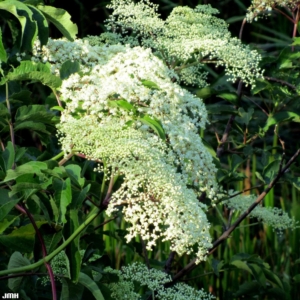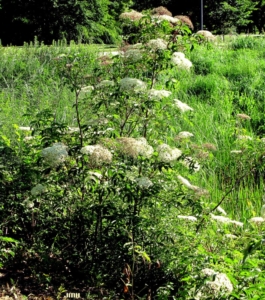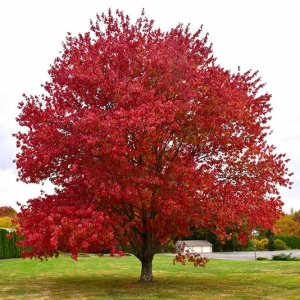Description
The Common Elderberry (Sambucus canadensis), a robust native shrub, is a vibrant addition to Longbranch landscapes. Growing 6–12 feet tall with a spread of 6–10 feet, it features arching branches, pinnate leaves with serrated leaflets, and large, flat clusters of creamy-white flowers in early summer. These give way to dark purple-black berries by late summer, which are edible when cooked and a
favorite of birds like cardinals and thrushes. The foliage turns yellow in fall, adding seasonal interest.
Ecologically, Common Elderberry is a standout. Its nectar-rich flowers attract pollinators such as bees and butterflies, while its berries support a wide range of wildlife, boosting biodiversity. Thriving in full sun to partial shade, it prefers moist, well-drained soils but tolerates wet conditions, making it ideal for rain gardens or streambanks. With a lifespan of 20–50 years, its suckering habit creates thickets perfect for naturalized areas or wildlife habitats.
For success, plant in a sunny or partly shaded spot with moist soil and water consistently during the first year to establish roots. Elderberry is generally pest- resistant, but monitor for aphids or powdery mildew, which are manageable.
Love pies? This elderberry bush will not only provide shelter for small birds and gorgeous blossoms in the spring for pollinators, but if you can beat the birds to the ripe berries in early September you can use them to bake delicious Elderberry Pie.


| Common Elderberry Facts and Features | |
| Mature Size | Large shrub (more than 8 feet) |
| Sun/Shade | Full sun (6 hrs direct light daily), Partial sun / shade (4-6 hrs light daily) |
| Moisture | Occasional drought, Occasional flooding, Road salt |
| Soil | Acid soil, Alkaline soil, Moist, well-drained soil |
| Flowers | Large, flat-topped, 4 to 12 inch diameter clusters are made up of numerous small, white flowers, blooming in mid-June. Very fragrant and showy. |
| Fruit | Clusters of purple-black, berry-like fruit (drupe) at the ends of branches. Juice is used to make jams, jellies, and wine. |
| Special Features | Many birds and pollinators are attracted to this shrub. |






